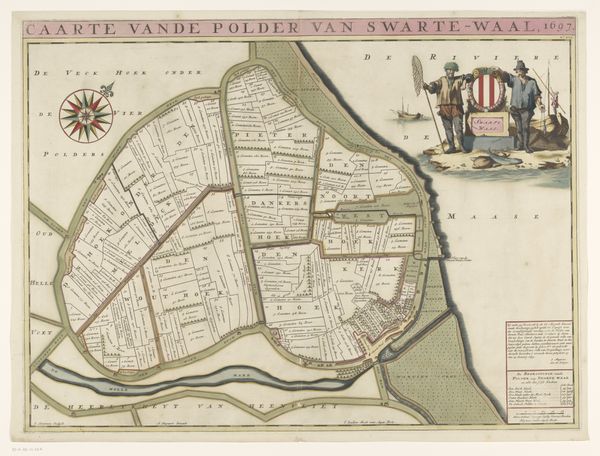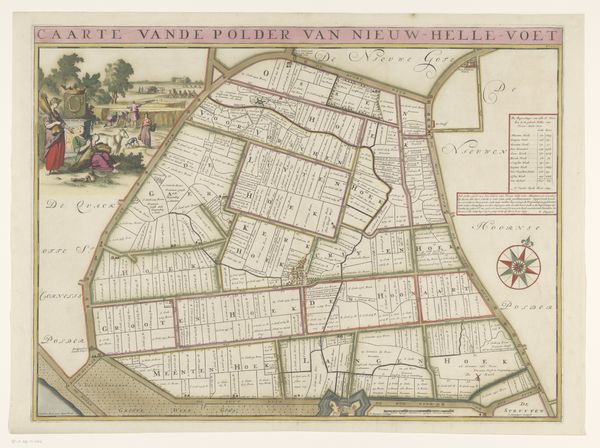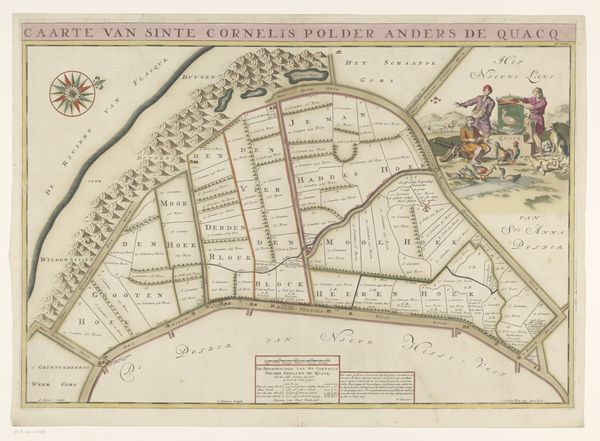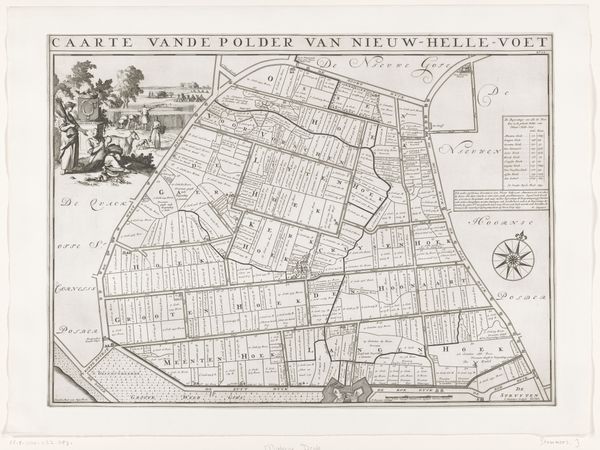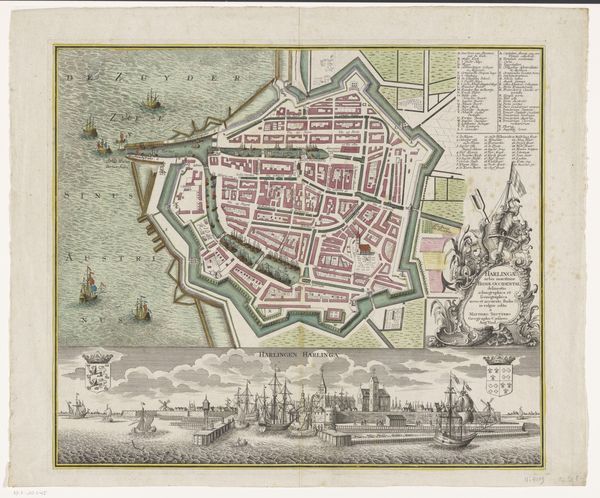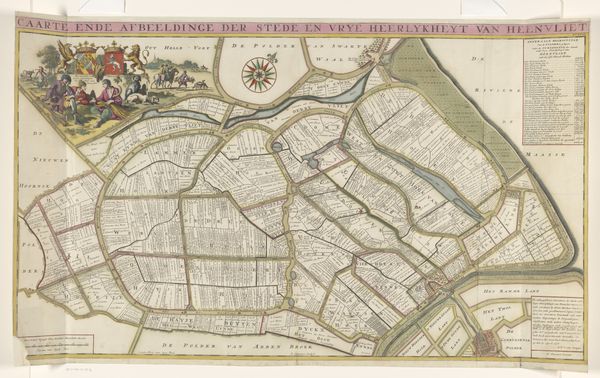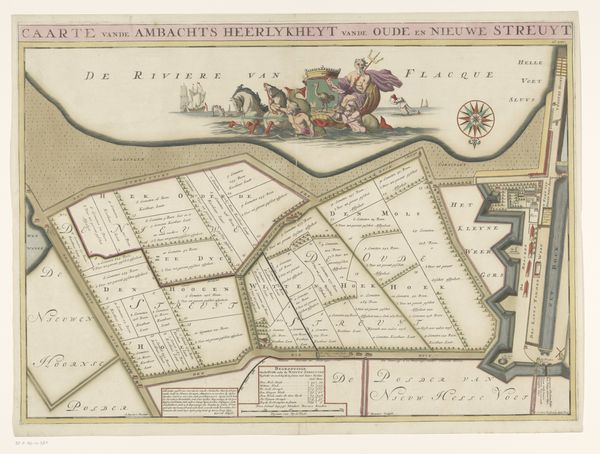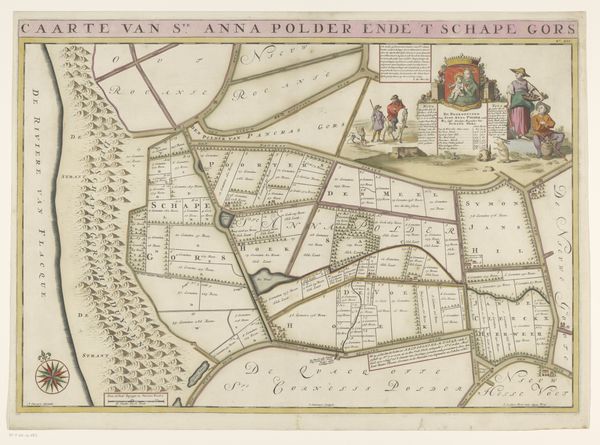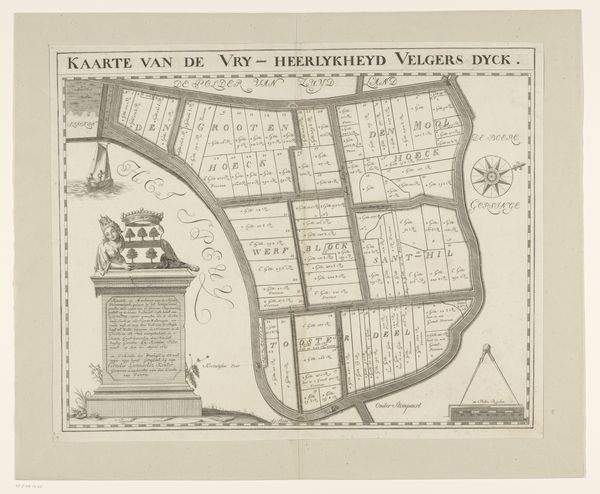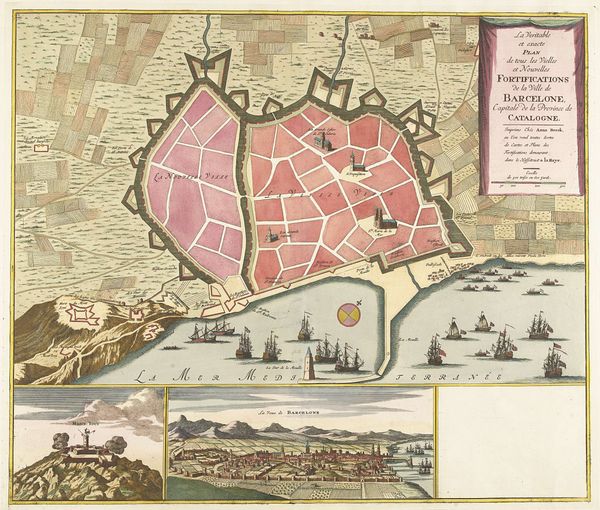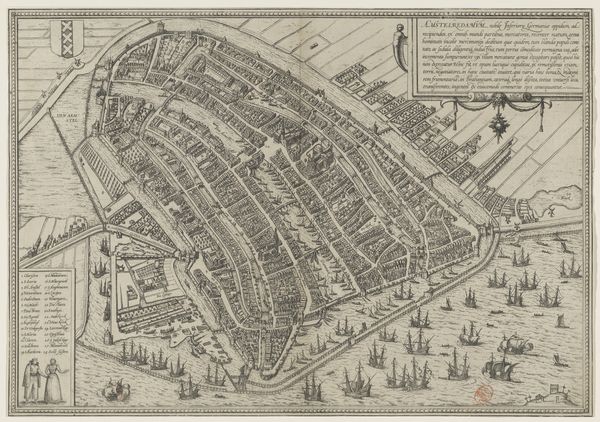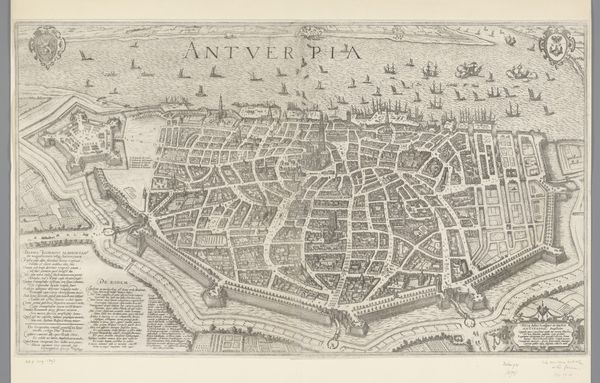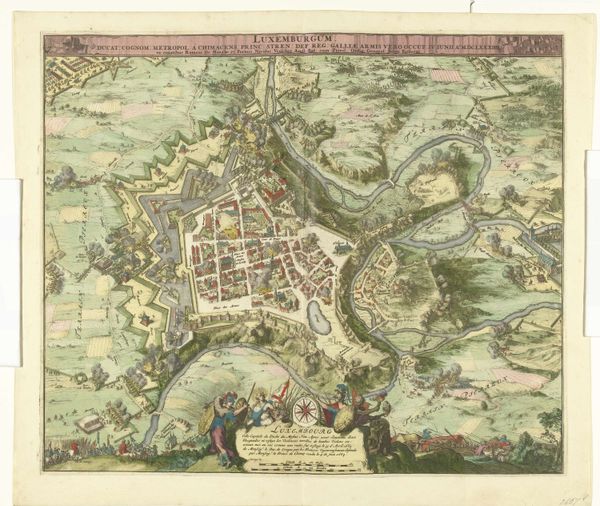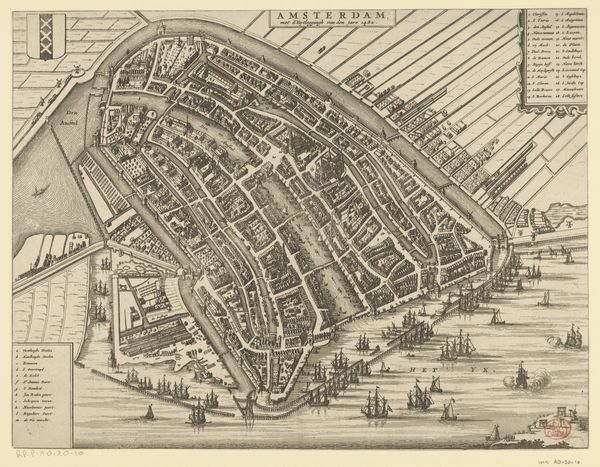
drawing, print, paper, pen, engraving
architectural sketch
drawing
dutch-golden-age
landscape
paper
architectural drawing
pen work
architecture drawing
pen
cityscape
engraving
Dimensions: height 497 mm, width 672 mm
Copyright: Rijks Museum: Open Domain
Editor: This is a fascinating Dutch Golden Age map of the Vierpolders polder area, created by Jan Stemmers between 1701 and 1729. I’m really struck by how detailed and intricate it is – almost like a puzzle, with all these tiny divisions of land. How do you interpret the imagery used in a map like this? Curator: It’s interesting you call it a puzzle. Consider the historical weight a map carries; it's not merely geographic. Notice how this map marries precise cartography with pictorial elements, symbols layered to communicate more than just directions. Editor: Symbols, like the compass rose and the people in the corner? Curator: Exactly. The compass, of course, guides, but it also represents exploration, control, and a central point from which to understand the world. The figures – what do they tell you about the Dutch relationship to this landscape? Editor: They seem to represent prosperity and care – tending to animals, overseeing a fertile land. Are those intended to be symbolic representations rather than purely illustrative? Curator: Absolutely! They reflect a societal value system: land management equated with civic virtue, successful agriculture tied to national identity. Maps became potent symbols of ownership and progress. The emotional weight of these images – security, dominion – shapes our perception of space even today. Does that resonate with you? Editor: Yes, I see what you mean! It makes you think about maps differently, as intentional pieces with built-in cultural meanings. Curator: Precisely. Maps like this become records of how a culture envisioned its place in the world, both practically and ideologically. Examining that iconography offers valuable insight into the culture itself.
Comments
No comments
Be the first to comment and join the conversation on the ultimate creative platform.
